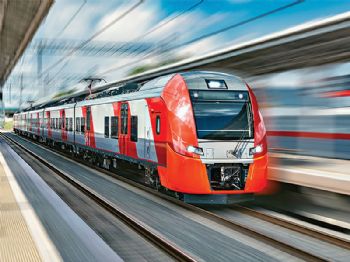
A research team from the Department of Electrical and Electronic Engineering at Xi’an Jiaotong-Liverpool University (ww.xjtlu.edu) has developed a new algorithm that helps trains run at optimal speeds, while saving energy.
Team leader Chaoxian Wu says the research offers a new way to reduce a train’s energy consumption by using the discharge and charge mode of energy storage devices in combination with optimal train scheduling through mathematical modelling.
He said: “These days, almost all electric trains use a technology called regenerative braking, which transforms the kinetic energy generated from braking into electrical energy, which is then stored.
"Trains without on-board energy storage devices will transmit transformed electrical energy to the grid, which then allocates a portion of that energy to other trains in the proximity; but if there are no trains nearby, the electricity is wasted.
"We propose that trains should be equipped with on-board energy storage devices, so they can absorb the energy generated through the regenerative braking themselves, and release it whenever they need to accelerate.”
Mr Wu says the research team has established the optimal discharge and charge operation model for on-board energy storage devices to improve a train’s performance and reduce its carbon emissions.
To illustrate how the model works, he offers the example of a train travelling between stations.
He said: “A train undergoes acceleration, cruising, coasting, deceleration and pulling in. Right now, that process relies mainly on a train driver’s decisions; and if a driver slows a train too soon before entering the station,
it has to accelerate again to reach where it needs to go.
"This process of accelerating and decelerating repeatedly leads to unnecessary energy consumption.”
The new algorithm optimises the operation of trains by determining the exact time to accelerate and decelerate to conserve energy and setting rules for how the on-board energy storage devices should discharge and charge
to support efficient operation.
“By adopting this model, trains with on-board energy storage devices will use 10% less energy than those without them, which could make a huge difference to our environment.”